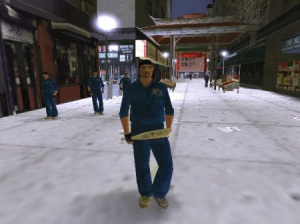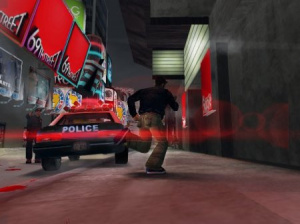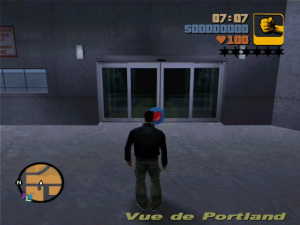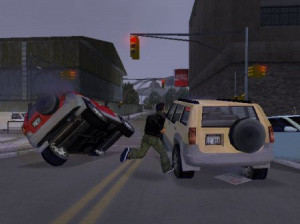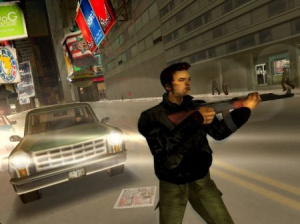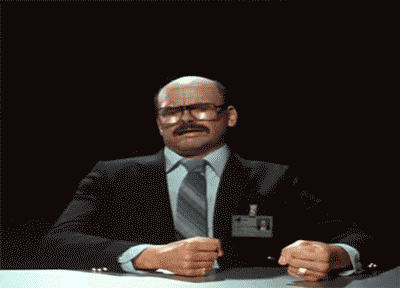KyoZz
Tag, you're it.
Los Angeles, E3 2001. With the heat suffocating the City of Angels, the video game industry's must-see event is in full swing.
For publishers and developers, the show is both a great joy and an intense stress. This June, journalists are witnessing one of the most unforgettable editions of all time thanks to extraordinary games.
However, on the stand of DMA Design/Rockstar Games, the Scots look grim.
The third episode of Grand Theft Auto is overshadowed by Halo, Zelda, Metroid or Metal Gear Solid 2, the same one that a year earlier froze visitors as soon as the trailer was projected on the giant living room screen.
While some media deign to present the title from every angle, others (the majority) hardly speak of it, preferring to highlight the very exciting State of Emergency. Edinburgh's proteges don't know it yet, but they're about to watch the entire industry from above.
Released on October 22, 2001, GTA III revolutionized the video game landscape and put the Grand Theft Auto saga back to the fore.
Here is the crazy story of the game that has become a juggernaut that crushes everything in its path!

To understand where GTA came from, it is necessary to go back to its origins. It all started when Dave Jones, a computer enthusiast, set out to develop a shoot-em up inspired by Konami's Salamander.
While his pals at the computer club continued to program on the aging ZX Spectrum technology, the Dundee native gave in to the Amiga sirens to create the game Menace with one of his sidekicks, Tony Smith. He obtains the support of Psygnosis and decides to found his own studio.
Dave Jones then chose the name DMA Design, a term he saw in an Amiga programming manual. The company was founded in 1988 and won over the video game world with careful adaptations and a certain… Lemmings.

Dave Jones
Carried by this license to planetary success, the studio is making its way and is developing - in parallel with Lemmings sequels and spin-offs - new games.
At the same time, one of the record majors, BMG Entertainment, create its multimedia division: BGM Interactive.
The group, which is part of the Bertelsmann AG consortium (a German giant, present in 42 countries, which notably distributed SEGA products in its territory), is interested in a new concept from Dave Jones...
Race'n'Chase
In 1995, Jones moved to BMG Interactive and outlined the contours of his new game. Entitled Race'n'Chase, it features criminals grappling with the police.
Sam Houser is also sent there by TAKE 2 despite having no game development experience to "give him something to do". At that time, only 2 projects are in active development at BMG Interactive: a soccer game and Race'n'Chase.
Leafing through the Race'n'Chase game design document, the duo are taken aback: The idea is politically incorrect and the title aims to be a fun multiplayer game, to let off steam and carried by a new graphic approach.
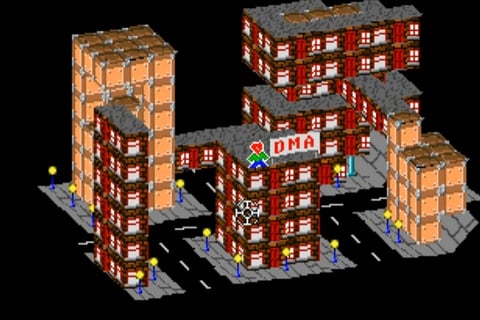
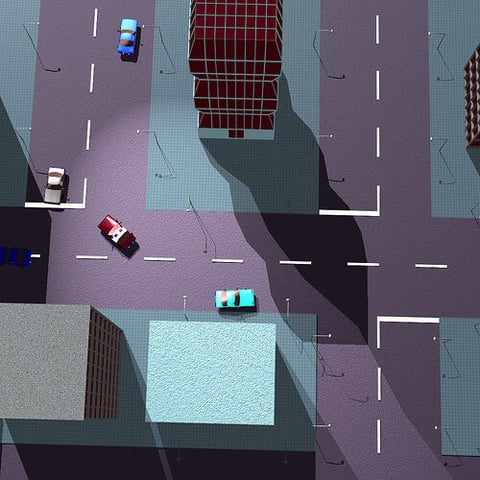
Mike Dailly's prototype that served as the basis for Grand Theft Auto //// An illustration previewing the gameplay of the game
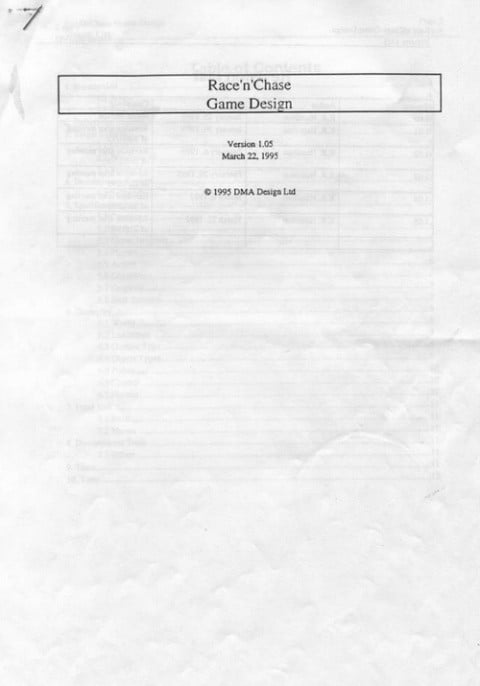
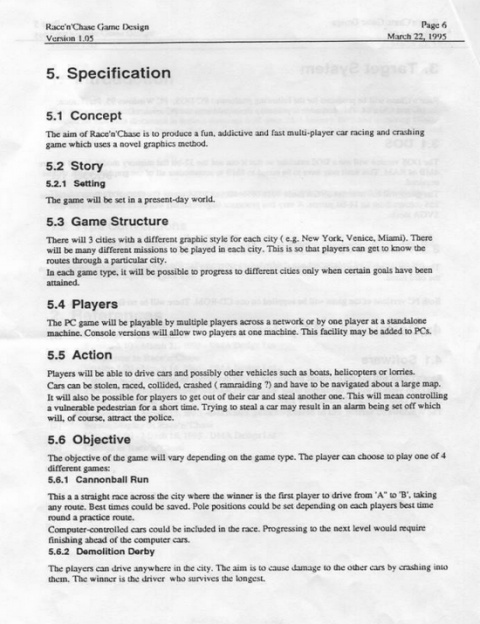

Race'n'Chase game design documents
Set in three cities (New York, Venice and Miami), it features high-powered action scenes, crashes and the ability to pilot cars, trucks, boats and helicopters.
Scheduled for PC, PlayStation, Saturn and Ultra 64 (at the time, the Nintendo 64 still bears its code name), Race'n'Chase is the culmination of a in-house prototype created by Mike Dailly, the man behind Lemmings and Unirally.
As a true jack-of-all-trades and keen on new technologies, he has succeeded in reproducing a metropolis with its buildings, its roads, its signs, its lampposts.
Despite a surprisingly good result, decision makers are forcing the team to reposition the camera in height (this will force them to apply a large texture with the junction of the different roads on the ground) for the purposes of the game... or whatever.

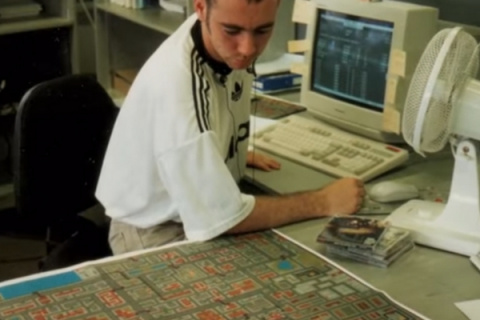
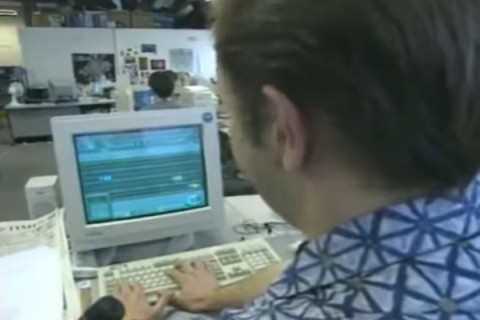
After several weeks of testing, the developers of DMA Design realize this: even when two teams challenge each other (one controlling thieves, the other policemen), the interest of the game flirts with a dotted zero.
As it stands, Race'n'Chase is no fun and relies only on its innovative graphics and its zooming in and out camera system. As the staff mulled over an alternative, one of the developers exclaim: But of course! Why not just control the thieves?
His colleagues, at first doubtful, eventually understand where he was going. In multiplayer, Race'n'Chase imposes races that are difficult to control within a limited radius and dodging pedestrians is a challenge: it is simply impossible with such a concept.
By taking on the role of criminals, and therefore unscrupulous people, the problem is solved! This is how Race'n'Chase, which started out as a armed police and thief racing game, will turn into a headline-grabbing single-player game.
No longer having any limits, developers can imagine lots of missions, stage all kinds of vehicles, etc.

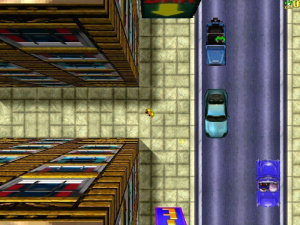
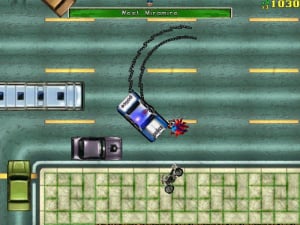
Convinced by the potential of the game, Dave Jones returned to BMG Interactive and manages to convince Sam and Dan Houser, the producers. Only the title considered a little catch-all is changed: Race'n'Chase becomes the famous Grand Theft Auto, marking the notion of vehicle theft.
However, the development was not easy because it was necessary to draw each district of the city, create a large paper map and then transpose the drawings into the game engine.
To strike a big blow, the Houser brothers have set up a decidedly rowdy campaign in which parents are told to keep their kids away from Grand Theft Auto.
The idea is to create a buzz and it works! Mainstream newspapers grabbed hold of the phenomenon, saying (many times) that the title will be canceled altogether.
On October 21, 1997, Grand Theft Auto was released for PC before being adapted for PlayStation in December. If the magazine Consoles + gives it a score of 89%, Joypad offers it just an insert in the "zapping tests". PlayStation Magazine, meanwhile, scores 2 out of 10 in the Short Film section (as strange as it sounds).
The first GTA challenges with its concept, but quickly turns in circles, despite an immersive universe and very cool missions.
Driven by two million sales of Grand Theft Auto, DMA Design decided to create an expansion pack. Entitled London 1969, it was released in 1999 for PC and PlayStation.
Using the same game engine, this additional adventure was a hit in England thanks to its locality (the English capital), but also the missions inspired by James Bond.
This expansion will be completed the same year (only on PC) by a completely free mission pack: London 1961.
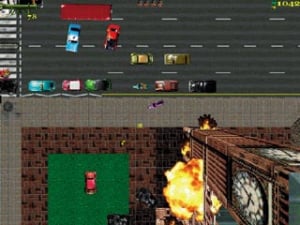
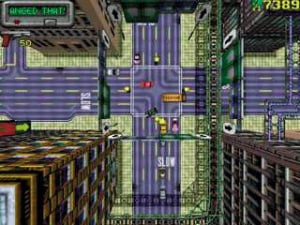
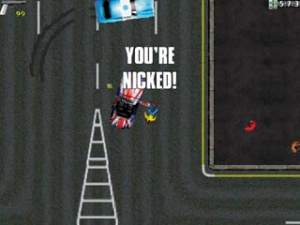
TAKE 2 and Rockstar
In parallel with the release of Grand Theft Auto, the publisher Take 2 Interactive goes public and begins to buy several studios. At the beginning of 1998, the American company seized BMG Interactive and recovered the GTA license.
In the months that followed, the Houser brothers launched discussions with the management of Take 2 Interactive for the creation of an internal development studio: Rockstar Games was born.
For DMA Design, the studio behind Grand Theft Auto, the period is complex. It first passed into the fold of the publisher Gremlin Interactive, before being acquired by Infogrammes.


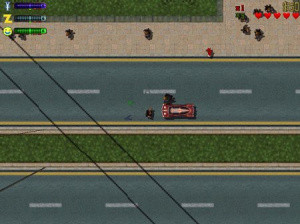
The business world being ruthless, many discussions take place at this time and result in the "victory" of Take 2 Interactive to the detriment of the French company. From now on, the GTA brand is linked to Take 2.
For the developers of DMA Design (now under the American flag), at work on the continuation of GTA, the blow is hard. They do not adhere to the policy of their major shareholder and decide to leave the company. The work of Grand Theft Auto 2 is then picked up by the new DMA Design team.
This visually superior sequel was released in 1999. First available on PlayStation and PC, it will later be adapted for Dreamcast. Close to the original, it introduces the gang system and immerses the player in a dystopian world, carried by striking lighting.
We play a man named Claude Speed who will gradually climb the ranks of criminality by working for the various gangs. GTA 2 also offers five radios, each linked to a gang.
This is how Grand Theft Auto, which started from nothing or almost, has become a series to watch.
However, has it become a must? Not at all.
While GTA II receives more praise overall than its first entry, it is not getting dazzling ratings either.
According to newspapers, it is even quite the opposite. Joypad gives it a score of 3, Consoles + delegates a page with an estimated interest of 85% and Player One, although more generous with its two pages, does not exceed 69%. on the rating.
PlayStation Magazine also has its double page, but the sentence is severe with a pitiful 3 out of 10.
The Grand Theft Auto series is appealing, but we can not say that it is unanimous. Dave Jones, tired of working on the saga, resigned immediately. He founded Realtime Worlds in 2002, the studio behind a certain Crackdown.
A revolution is approaching
In the early 2000s, DMA Design and Rockstar Games were still two separate structures. Following the departure of Dave Jones, a certain Leslie Benzies, programmer at DMA Design since 1995, takes the head of the studio.
At the start of this new millennium, all eyes are on the PlayStation 2 and the developers know that their next production must take a step up, while taking advantage of the intrinsic power of the promising machine from Sony.
This is why Benzies acquires the license of RenderWare from Criterion Games. The 3D engine has been around since 1996, has been noticed on titles like Trick Style and is intended to be very powerful (it will prove this a little later with the Burnout series).
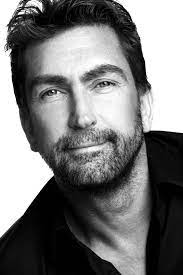
Leslie Benzies
At DMA Design, the team has been working on various projects for several months, including a fairly advanced prototype. And this is by no means a Grand Theft Auto-branded essay.
No, at this time, DMA Design is planning to create a game based on… Godzilla. Are you starting to see the path? The Scottish team realizes that the prototype, which displays a 3D city that is being destroyed (with thrown objects, particles ...), perfectly fits a possible GTA.
And they will quickly tackle the task.
A city more real than anything else
At this point, it is important to remember that DMA Design, like the Rockstar Games label, is part of the Take 2 Interactive entity. So it is not strictly speaking Rockstar that begins the work on the new GTA, but rather DMA Design.
In fact, Rockstar gives the green light to DMA Design to develop the future GTA in 3D for a simple reason: Leslie Benzies is at the origin of the game Space Station: Silicon Valley, a little-known work of the Nintendo 64 which, in addition to being a little visual delight, is very original.
And this title caught the eye of Rockstar Games - and therefore the Houser brothers - who have full confidence in Benzies. This is how the creation of Grand Theft Auto III really begins.
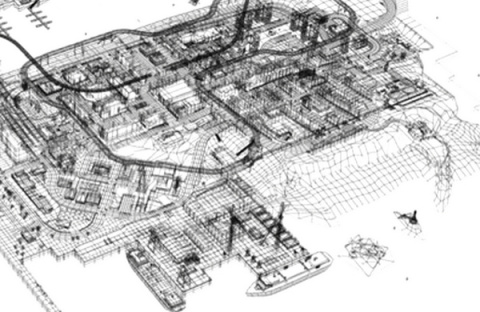

Starting from the prototype of the Godzilla project, the Scottish staff sees the colossal potential of RenderWare, capable of materializing a city crying out of realism. However, the challenge is considerable.
So, just like what was done with the very first GTA and its sequels, the map is entirely displayed quarter by quarter to save console memory. The idea is to optimize every part of the map, while opening up the possibilities for developers.
The complexity of the creation of the city is such that the artists indicate all the unevenness and make sure to be ultra precise on the elements allowing the modelers to disentangle themselves. This is where Aaron Garbut comes in.
The man is the main artist of the project, he aims to provide players with a gigantic city, represented by several very different neighborhoods, and even larger than those of previous episodes of GTA.
By teaming up with programmer Adam Fowler, he manages to find a formidable method to handle the limited memory of the PlayStation 2.
Concretely, as with Skies of Arcadia on Dreamcast, the program "streams" the elements as the player progresses through the game. The city is not loaded all at once, but is loaded "just-in-time" (the decorations facing the player are displayed, while those that you do not see are deleted).
That gives enormous freedom to the team, which can range from experimentation to experimentation. In an interview with IGN in 2011, Sam Houser recalls:
"We realized the monster potential of GTA III at the end of 2000. At this point we had just set up the map and we could move the character.
Once all of that was in place, we felt that it was enough to do the rest correctly, for the game to become amazing."
To bring life to the metropolis of Liberty City (which gradually took its inspiration from New York), DMA Design hand models hundreds and hundreds of objects, vehicles and even characters.
Animation, on the other hand, involves motion capture, a technology that was used a lot in the video game industry at the time. The video recordings take place in a rented studio near the Brooklyn Navy Yard, a place with strong historical content in New York.
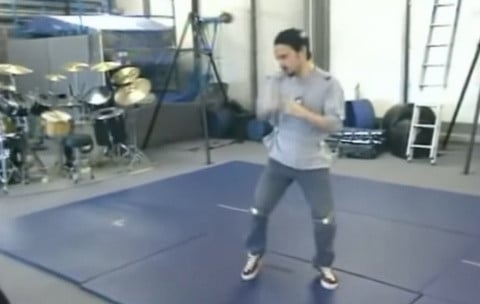

This is what gives the game a realistic feel, with punchy cutscenes and gameplay sequences. All this together gives the first 360° GTA a unique cachet. Business district, infamous areas, industrial centers, port, airport… Liberty City is striking!
In addition to offering a gigantic sandbox to the player, the game surpasses almost all other productions. The inhabitants go about their business, the weather changes in real time, time passes and the day/night cycle is managed, cars roam the streets…
Launched into an insane challenge, the DMA Design proteges do not forbid themselves anything ! Sam Houser completes:
"We had so many limitations in what we could do with our games on PlayStation… There was always that "graphics versus gameplay" debate about any decision.
With the PlayStation 2, our hope was to erase that. To have a game offering as much freedom as the previous episodes, but with a more pronounced sense of life and a cinematic staging, it could be incredible!
I think it was a good decision, but it is not a decision without adversity. A lot of people thought we couldn't do anything other than 2D."
As development progresses, the producers of the Rockstar Games label are won over, but want to go even further! For Sam and Dan Houser, the early GTAs had an interesting storyline for them, but missions where lacking in panache, especially in the writing.
Again, they are not going to do things by halves….
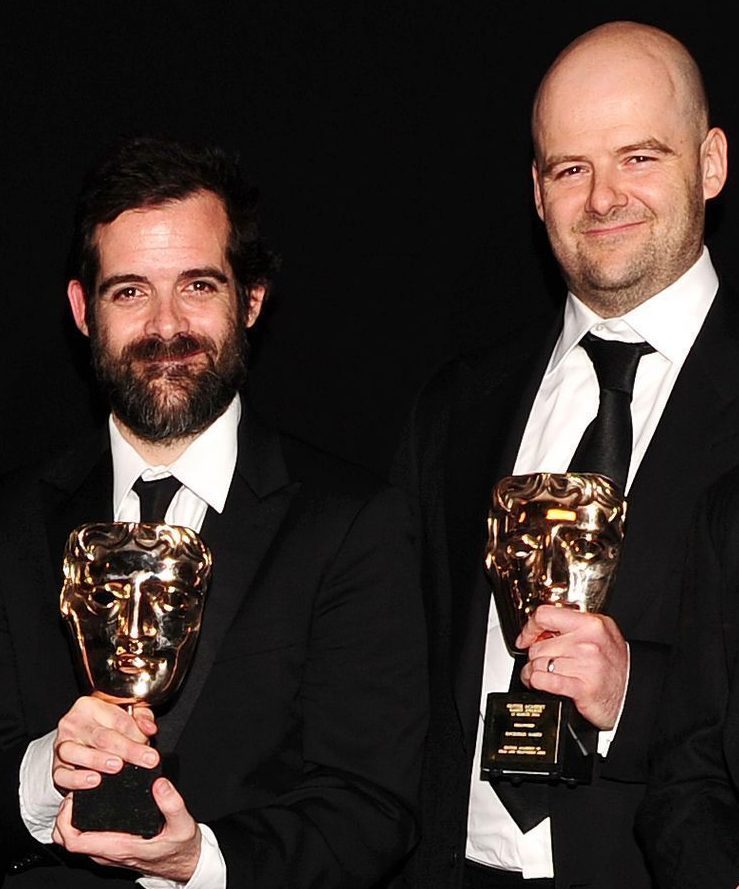
Dan & Sam Houser
A writing above the lot
On top of all the movement captured by actors, GTA III has to be a fully voiced game. And to have an amazing story, besides having the right people, you need a plot that holds up.
In previous GTAs, the missions are not really linked together, there is no real common thread. The Houser brothers absolutely want to eradicate this loophole.
That's why Dan Houser helps write the plot, while his eldest (three years older) oversees all of the soundtrack and dubbing. He recounts :
"In the case of GTA III, the challenge was to create a 3D story, making the sound resonate as if it were in 3D and making the radios feel like they were in a 3D world. What we've always tried to do is make our games consistent throughout the experience.
So the story and the graphics, the way people communicate and the mission flow, everything feels consistent in the game. When we went from 2D graphics to a 3D world, everything else had to have that 3D feeling.
Obviously, this created issues that we hadn't really thought about. You have all these people walking around, they need to talk. You have to design a system for that, and then you have to find a way to achieve what you have set for yourself.
And it's crazy back then, we're talking about recording 8,000 voices or 8,000 lines of dialogue!"
The figure seems completely crazy for the time, but in reality, it would be 18,000 dialogues according to the audio programmer of the game. Still, for the sake of realism, the Houser brothers use experienced actors only to dub the main and secondary characters, and push the vice to develop 9 radios.
Of course, each radio has its own style and its own jingles! So, all you have to do is enter a vehicle to enjoy an ultra-eclectic soundtrack: pop-rock, 80s, classical, trance, soul, rap and hip-hop, disco, reggae ... there is something for everyone.
It's undoubtedly GTA III that will democratize this concept and make it natural for any modern open world that respects itself.
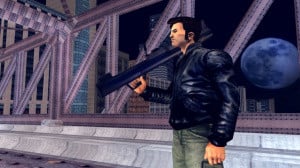
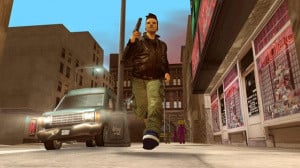
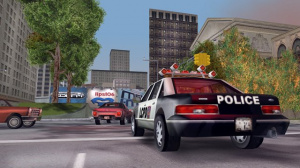
For the writing, too, it was no small task. Dan Houser and his colleagues had to scramble to create a story that was in line with the freedom offered to the player. He and co-writer James Worrall dabbled in gangster flicks and Scorsese feature films.
This gives GTA III a mature and unique feel. And yet, despite the game's exceptional plot, one detail calls out: the main character, Claude Speed, does not speak. In a question-and-answer session in December 2011, the explanation was given:
"It may now seem obvious that non-player characters (NPCs) need to speak in games, but that wasn't necessarily the case in 2001, certainly not in an open-world game. We were setting up a lot of procedures as we went along, and we decided that the NPCs had to talk.
We had to figure out how to make them talk (using cutscenes captured via motion capture, something that had never been done before, at least on such a scale).
So we decided that the protagonist of the game wouldn't speak, partly to help people relate to him, but mostly because we had a lot of other issues to work out, and it didn't feel like a major issue to us."
GTA III in a cartoon world?
Before plunging the player into a dark Liberty City, DMA Design created a GTA III in the image of its predecessors, that is to say with a visual tone close to cartoon.
So in its alpha version, the game was much more colorful and the atmosphere was totally different from the end result, bordering on "Simpson-like".
The colors, the vehicles on the road, the surroundings ... everything was much brighter. To see these images again today is surprising!
A story of chalenges
The third episode of the series gradually took shape, thanks to the multiple challenges accomplished by the team at DMA Design (and that of the Rockstar Games label).
It should be understood that each new element (cutscenes, dialogues, weather in real time, animations…) gave rise to new challenges. For example, for the animation of the driver, the actors had to use different postures for their attitude to suit the type of vehicle being driven by the player.
The animators then had to juggle so that each pose, each movement was realistic. To offer such freedom to the player, even when the PlayStation 2 was very young, it was completely crazy!
It was out of the ordinary! For Sam Houser, GTA III is a cross between a gangster movie and an RPG, which drew on different works: The Legend of Zelda, Super Mario 64 or the feature film Goodfellas.
And as the game headed for launch, a new challenge - quite different this time - arose in front of the team.
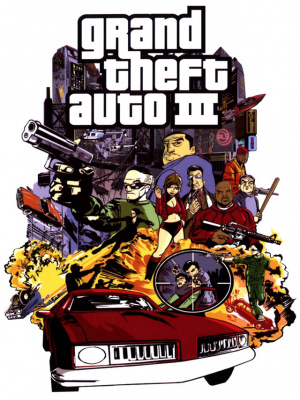
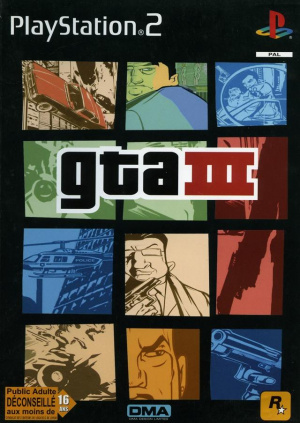
On September 11, 2001, the whole world witnessed the unspeakable: the attacks on the World Trade Center. For DMA Design and Rockstar Games, the shock is considerable.
And for good reason, if the Scots can continue to work, they are in the same state of astonishment as the majority of people in the world.
On the other hand, for Rockstar Games and the Housers who have their offices in New York in the district of Manhattan, the impact is tenfold as Sam Houser specifies:
"We were working hard, trying to finish GTA III and Smuggler's Run 2. Both were close to being finalized and we were in a race against the clock.
Obviously the guys in Scotland could continue to work, but on our side we couldn't get into the office for five days because of the roadblocks. It was a very strange time, but we were very close to September 11, much closer than the vast majority of people.
And so, I think we were able to make judgments about what was appropriate and what was not."
That day I saw this from my apartment window. This is the most real action movie I have ever seen because, damn it, it was real and no explosion ever felt so realistic to me. It's kind of like saying "You can keep your Bruckheimer's, that doesn't work anymore.""
As a precaution and so that everyone takes back these spirits, DMA Design and Rockstar Games decide to postpone the release of the game. In order not to offend anyone, changes are made to the program.
To give the game a little life, the developers notably added a large plane flying in the sky. Since it sometimes looked like it was crossing skyscrapers, its trajectory was altered.
Lines of dialogue, especially for radios, were removed and the cover, echoing the terrible events of September 11, was completely redesigned in 24 hours.
Finally, all the emergency vehicles (Police, Firemen, etc.) have been recolored to prevent the link from being made with the real vehicles of the rescuers/heroes of that tragic day. Sam Houser explained that most of the marketing and presentation of GTA III was done in one evening, in response to this heinous act.
It will, of course, not be the only title to undergo changes.
For publishers and developers, the show is both a great joy and an intense stress. This June, journalists are witnessing one of the most unforgettable editions of all time thanks to extraordinary games.
However, on the stand of DMA Design/Rockstar Games, the Scots look grim.
The third episode of Grand Theft Auto is overshadowed by Halo, Zelda, Metroid or Metal Gear Solid 2, the same one that a year earlier froze visitors as soon as the trailer was projected on the giant living room screen.
While some media deign to present the title from every angle, others (the majority) hardly speak of it, preferring to highlight the very exciting State of Emergency. Edinburgh's proteges don't know it yet, but they're about to watch the entire industry from above.
Released on October 22, 2001, GTA III revolutionized the video game landscape and put the Grand Theft Auto saga back to the fore.
Here is the crazy story of the game that has become a juggernaut that crushes everything in its path!

To understand where GTA came from, it is necessary to go back to its origins. It all started when Dave Jones, a computer enthusiast, set out to develop a shoot-em up inspired by Konami's Salamander.
While his pals at the computer club continued to program on the aging ZX Spectrum technology, the Dundee native gave in to the Amiga sirens to create the game Menace with one of his sidekicks, Tony Smith. He obtains the support of Psygnosis and decides to found his own studio.
Dave Jones then chose the name DMA Design, a term he saw in an Amiga programming manual. The company was founded in 1988 and won over the video game world with careful adaptations and a certain… Lemmings.

Dave Jones
Carried by this license to planetary success, the studio is making its way and is developing - in parallel with Lemmings sequels and spin-offs - new games.
At the same time, one of the record majors, BMG Entertainment, create its multimedia division: BGM Interactive.
The group, which is part of the Bertelsmann AG consortium (a German giant, present in 42 countries, which notably distributed SEGA products in its territory), is interested in a new concept from Dave Jones...
- Grand Theft Auto has sold 2 million copies. Its sequel has found only one million buyers while Grand Theft Auto III is said to have sold 25 million units to date.
Race'n'Chase
In 1995, Jones moved to BMG Interactive and outlined the contours of his new game. Entitled Race'n'Chase, it features criminals grappling with the police.
Sam Houser is also sent there by TAKE 2 despite having no game development experience to "give him something to do". At that time, only 2 projects are in active development at BMG Interactive: a soccer game and Race'n'Chase.
Leafing through the Race'n'Chase game design document, the duo are taken aback: The idea is politically incorrect and the title aims to be a fun multiplayer game, to let off steam and carried by a new graphic approach.


Mike Dailly's prototype that served as the basis for Grand Theft Auto //// An illustration previewing the gameplay of the game



Race'n'Chase game design documents
Set in three cities (New York, Venice and Miami), it features high-powered action scenes, crashes and the ability to pilot cars, trucks, boats and helicopters.
Scheduled for PC, PlayStation, Saturn and Ultra 64 (at the time, the Nintendo 64 still bears its code name), Race'n'Chase is the culmination of a in-house prototype created by Mike Dailly, the man behind Lemmings and Unirally.
As a true jack-of-all-trades and keen on new technologies, he has succeeded in reproducing a metropolis with its buildings, its roads, its signs, its lampposts.
Despite a surprisingly good result, decision makers are forcing the team to reposition the camera in height (this will force them to apply a large texture with the junction of the different roads on the ground) for the purposes of the game... or whatever.



After several weeks of testing, the developers of DMA Design realize this: even when two teams challenge each other (one controlling thieves, the other policemen), the interest of the game flirts with a dotted zero.
As it stands, Race'n'Chase is no fun and relies only on its innovative graphics and its zooming in and out camera system. As the staff mulled over an alternative, one of the developers exclaim: But of course! Why not just control the thieves?
His colleagues, at first doubtful, eventually understand where he was going. In multiplayer, Race'n'Chase imposes races that are difficult to control within a limited radius and dodging pedestrians is a challenge: it is simply impossible with such a concept.
By taking on the role of criminals, and therefore unscrupulous people, the problem is solved! This is how Race'n'Chase, which started out as a armed police and thief racing game, will turn into a headline-grabbing single-player game.
No longer having any limits, developers can imagine lots of missions, stage all kinds of vehicles, etc.



Convinced by the potential of the game, Dave Jones returned to BMG Interactive and manages to convince Sam and Dan Houser, the producers. Only the title considered a little catch-all is changed: Race'n'Chase becomes the famous Grand Theft Auto, marking the notion of vehicle theft.
However, the development was not easy because it was necessary to draw each district of the city, create a large paper map and then transpose the drawings into the game engine.
To strike a big blow, the Houser brothers have set up a decidedly rowdy campaign in which parents are told to keep their kids away from Grand Theft Auto.
The idea is to create a buzz and it works! Mainstream newspapers grabbed hold of the phenomenon, saying (many times) that the title will be canceled altogether.
On October 21, 1997, Grand Theft Auto was released for PC before being adapted for PlayStation in December. If the magazine Consoles + gives it a score of 89%, Joypad offers it just an insert in the "zapping tests". PlayStation Magazine, meanwhile, scores 2 out of 10 in the Short Film section (as strange as it sounds).
The first GTA challenges with its concept, but quickly turns in circles, despite an immersive universe and very cool missions.
Driven by two million sales of Grand Theft Auto, DMA Design decided to create an expansion pack. Entitled London 1969, it was released in 1999 for PC and PlayStation.
Using the same game engine, this additional adventure was a hit in England thanks to its locality (the English capital), but also the missions inspired by James Bond.
This expansion will be completed the same year (only on PC) by a completely free mission pack: London 1961.



TAKE 2 and Rockstar
In parallel with the release of Grand Theft Auto, the publisher Take 2 Interactive goes public and begins to buy several studios. At the beginning of 1998, the American company seized BMG Interactive and recovered the GTA license.
In the months that followed, the Houser brothers launched discussions with the management of Take 2 Interactive for the creation of an internal development studio: Rockstar Games was born.
For DMA Design, the studio behind Grand Theft Auto, the period is complex. It first passed into the fold of the publisher Gremlin Interactive, before being acquired by Infogrammes.



The business world being ruthless, many discussions take place at this time and result in the "victory" of Take 2 Interactive to the detriment of the French company. From now on, the GTA brand is linked to Take 2.
For the developers of DMA Design (now under the American flag), at work on the continuation of GTA, the blow is hard. They do not adhere to the policy of their major shareholder and decide to leave the company. The work of Grand Theft Auto 2 is then picked up by the new DMA Design team.
This visually superior sequel was released in 1999. First available on PlayStation and PC, it will later be adapted for Dreamcast. Close to the original, it introduces the gang system and immerses the player in a dystopian world, carried by striking lighting.
We play a man named Claude Speed who will gradually climb the ranks of criminality by working for the various gangs. GTA 2 also offers five radios, each linked to a gang.
This is how Grand Theft Auto, which started from nothing or almost, has become a series to watch.
However, has it become a must? Not at all.
While GTA II receives more praise overall than its first entry, it is not getting dazzling ratings either.
According to newspapers, it is even quite the opposite. Joypad gives it a score of 3, Consoles + delegates a page with an estimated interest of 85% and Player One, although more generous with its two pages, does not exceed 69%. on the rating.
PlayStation Magazine also has its double page, but the sentence is severe with a pitiful 3 out of 10.
The Grand Theft Auto series is appealing, but we can not say that it is unanimous. Dave Jones, tired of working on the saga, resigned immediately. He founded Realtime Worlds in 2002, the studio behind a certain Crackdown.
A revolution is approaching
In the early 2000s, DMA Design and Rockstar Games were still two separate structures. Following the departure of Dave Jones, a certain Leslie Benzies, programmer at DMA Design since 1995, takes the head of the studio.
At the start of this new millennium, all eyes are on the PlayStation 2 and the developers know that their next production must take a step up, while taking advantage of the intrinsic power of the promising machine from Sony.
This is why Benzies acquires the license of RenderWare from Criterion Games. The 3D engine has been around since 1996, has been noticed on titles like Trick Style and is intended to be very powerful (it will prove this a little later with the Burnout series).

Leslie Benzies
At DMA Design, the team has been working on various projects for several months, including a fairly advanced prototype. And this is by no means a Grand Theft Auto-branded essay.
No, at this time, DMA Design is planning to create a game based on… Godzilla. Are you starting to see the path? The Scottish team realizes that the prototype, which displays a 3D city that is being destroyed (with thrown objects, particles ...), perfectly fits a possible GTA.
And they will quickly tackle the task.
- At E3 2001, GTA III is presented alongside State of Emergency, another game from Rockstar Games/Take 2 Interactive. Sam Houser has no doubt that all eyes will be on GTA ... and the opposite is true.
Sam Houser would later confess, "I was really shocked at the time." This gave additional motivation to the game team, who went out of their way to polish their work down to the smallest detail.
A city more real than anything else
At this point, it is important to remember that DMA Design, like the Rockstar Games label, is part of the Take 2 Interactive entity. So it is not strictly speaking Rockstar that begins the work on the new GTA, but rather DMA Design.
In fact, Rockstar gives the green light to DMA Design to develop the future GTA in 3D for a simple reason: Leslie Benzies is at the origin of the game Space Station: Silicon Valley, a little-known work of the Nintendo 64 which, in addition to being a little visual delight, is very original.
And this title caught the eye of Rockstar Games - and therefore the Houser brothers - who have full confidence in Benzies. This is how the creation of Grand Theft Auto III really begins.


Starting from the prototype of the Godzilla project, the Scottish staff sees the colossal potential of RenderWare, capable of materializing a city crying out of realism. However, the challenge is considerable.
So, just like what was done with the very first GTA and its sequels, the map is entirely displayed quarter by quarter to save console memory. The idea is to optimize every part of the map, while opening up the possibilities for developers.
The complexity of the creation of the city is such that the artists indicate all the unevenness and make sure to be ultra precise on the elements allowing the modelers to disentangle themselves. This is where Aaron Garbut comes in.
The man is the main artist of the project, he aims to provide players with a gigantic city, represented by several very different neighborhoods, and even larger than those of previous episodes of GTA.
By teaming up with programmer Adam Fowler, he manages to find a formidable method to handle the limited memory of the PlayStation 2.
Concretely, as with Skies of Arcadia on Dreamcast, the program "streams" the elements as the player progresses through the game. The city is not loaded all at once, but is loaded "just-in-time" (the decorations facing the player are displayed, while those that you do not see are deleted).
That gives enormous freedom to the team, which can range from experimentation to experimentation. In an interview with IGN in 2011, Sam Houser recalls:
"We realized the monster potential of GTA III at the end of 2000. At this point we had just set up the map and we could move the character.
Once all of that was in place, we felt that it was enough to do the rest correctly, for the game to become amazing."
To bring life to the metropolis of Liberty City (which gradually took its inspiration from New York), DMA Design hand models hundreds and hundreds of objects, vehicles and even characters.
Animation, on the other hand, involves motion capture, a technology that was used a lot in the video game industry at the time. The video recordings take place in a rented studio near the Brooklyn Navy Yard, a place with strong historical content in New York.


This is what gives the game a realistic feel, with punchy cutscenes and gameplay sequences. All this together gives the first 360° GTA a unique cachet. Business district, infamous areas, industrial centers, port, airport… Liberty City is striking!
In addition to offering a gigantic sandbox to the player, the game surpasses almost all other productions. The inhabitants go about their business, the weather changes in real time, time passes and the day/night cycle is managed, cars roam the streets…
Launched into an insane challenge, the DMA Design proteges do not forbid themselves anything ! Sam Houser completes:
"We had so many limitations in what we could do with our games on PlayStation… There was always that "graphics versus gameplay" debate about any decision.
With the PlayStation 2, our hope was to erase that. To have a game offering as much freedom as the previous episodes, but with a more pronounced sense of life and a cinematic staging, it could be incredible!
I think it was a good decision, but it is not a decision without adversity. A lot of people thought we couldn't do anything other than 2D."
As development progresses, the producers of the Rockstar Games label are won over, but want to go even further! For Sam and Dan Houser, the early GTAs had an interesting storyline for them, but missions where lacking in panache, especially in the writing.
Again, they are not going to do things by halves….

Dan & Sam Houser
A writing above the lot
On top of all the movement captured by actors, GTA III has to be a fully voiced game. And to have an amazing story, besides having the right people, you need a plot that holds up.
In previous GTAs, the missions are not really linked together, there is no real common thread. The Houser brothers absolutely want to eradicate this loophole.
That's why Dan Houser helps write the plot, while his eldest (three years older) oversees all of the soundtrack and dubbing. He recounts :
"In the case of GTA III, the challenge was to create a 3D story, making the sound resonate as if it were in 3D and making the radios feel like they were in a 3D world. What we've always tried to do is make our games consistent throughout the experience.
So the story and the graphics, the way people communicate and the mission flow, everything feels consistent in the game. When we went from 2D graphics to a 3D world, everything else had to have that 3D feeling.
Obviously, this created issues that we hadn't really thought about. You have all these people walking around, they need to talk. You have to design a system for that, and then you have to find a way to achieve what you have set for yourself.
And it's crazy back then, we're talking about recording 8,000 voices or 8,000 lines of dialogue!"
The figure seems completely crazy for the time, but in reality, it would be 18,000 dialogues according to the audio programmer of the game. Still, for the sake of realism, the Houser brothers use experienced actors only to dub the main and secondary characters, and push the vice to develop 9 radios.
Of course, each radio has its own style and its own jingles! So, all you have to do is enter a vehicle to enjoy an ultra-eclectic soundtrack: pop-rock, 80s, classical, trance, soul, rap and hip-hop, disco, reggae ... there is something for everyone.
It's undoubtedly GTA III that will democratize this concept and make it natural for any modern open world that respects itself.



For the writing, too, it was no small task. Dan Houser and his colleagues had to scramble to create a story that was in line with the freedom offered to the player. He and co-writer James Worrall dabbled in gangster flicks and Scorsese feature films.
This gives GTA III a mature and unique feel. And yet, despite the game's exceptional plot, one detail calls out: the main character, Claude Speed, does not speak. In a question-and-answer session in December 2011, the explanation was given:
"It may now seem obvious that non-player characters (NPCs) need to speak in games, but that wasn't necessarily the case in 2001, certainly not in an open-world game. We were setting up a lot of procedures as we went along, and we decided that the NPCs had to talk.
We had to figure out how to make them talk (using cutscenes captured via motion capture, something that had never been done before, at least on such a scale).
So we decided that the protagonist of the game wouldn't speak, partly to help people relate to him, but mostly because we had a lot of other issues to work out, and it didn't feel like a major issue to us."
GTA III in a cartoon world?
Before plunging the player into a dark Liberty City, DMA Design created a GTA III in the image of its predecessors, that is to say with a visual tone close to cartoon.
So in its alpha version, the game was much more colorful and the atmosphere was totally different from the end result, bordering on "Simpson-like".
The colors, the vehicles on the road, the surroundings ... everything was much brighter. To see these images again today is surprising!
A story of chalenges
The third episode of the series gradually took shape, thanks to the multiple challenges accomplished by the team at DMA Design (and that of the Rockstar Games label).
It should be understood that each new element (cutscenes, dialogues, weather in real time, animations…) gave rise to new challenges. For example, for the animation of the driver, the actors had to use different postures for their attitude to suit the type of vehicle being driven by the player.
The animators then had to juggle so that each pose, each movement was realistic. To offer such freedom to the player, even when the PlayStation 2 was very young, it was completely crazy!
- GTA III is the result of the work of twenty people.
It was out of the ordinary! For Sam Houser, GTA III is a cross between a gangster movie and an RPG, which drew on different works: The Legend of Zelda, Super Mario 64 or the feature film Goodfellas.
And as the game headed for launch, a new challenge - quite different this time - arose in front of the team.


On September 11, 2001, the whole world witnessed the unspeakable: the attacks on the World Trade Center. For DMA Design and Rockstar Games, the shock is considerable.
And for good reason, if the Scots can continue to work, they are in the same state of astonishment as the majority of people in the world.
On the other hand, for Rockstar Games and the Housers who have their offices in New York in the district of Manhattan, the impact is tenfold as Sam Houser specifies:
"We were working hard, trying to finish GTA III and Smuggler's Run 2. Both were close to being finalized and we were in a race against the clock.
Obviously the guys in Scotland could continue to work, but on our side we couldn't get into the office for five days because of the roadblocks. It was a very strange time, but we were very close to September 11, much closer than the vast majority of people.
And so, I think we were able to make judgments about what was appropriate and what was not."
That day I saw this from my apartment window. This is the most real action movie I have ever seen because, damn it, it was real and no explosion ever felt so realistic to me. It's kind of like saying "You can keep your Bruckheimer's, that doesn't work anymore.""
As a precaution and so that everyone takes back these spirits, DMA Design and Rockstar Games decide to postpone the release of the game. In order not to offend anyone, changes are made to the program.
To give the game a little life, the developers notably added a large plane flying in the sky. Since it sometimes looked like it was crossing skyscrapers, its trajectory was altered.
Lines of dialogue, especially for radios, were removed and the cover, echoing the terrible events of September 11, was completely redesigned in 24 hours.
Finally, all the emergency vehicles (Police, Firemen, etc.) have been recolored to prevent the link from being made with the real vehicles of the rescuers/heroes of that tragic day. Sam Houser explained that most of the marketing and presentation of GTA III was done in one evening, in response to this heinous act.
It will, of course, not be the only title to undergo changes.
Last edited:


